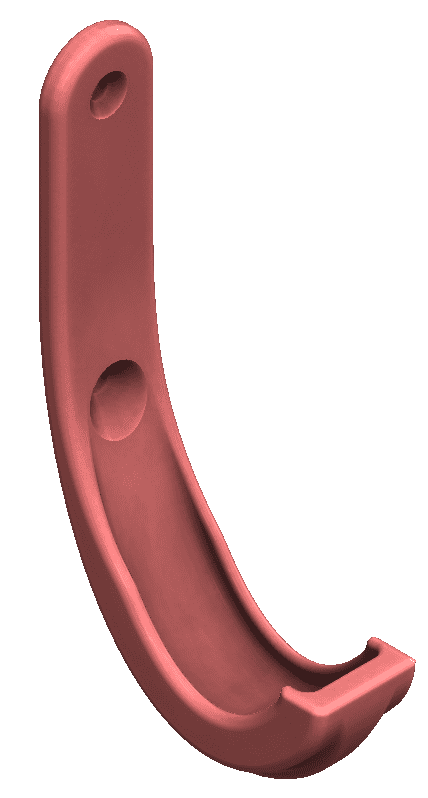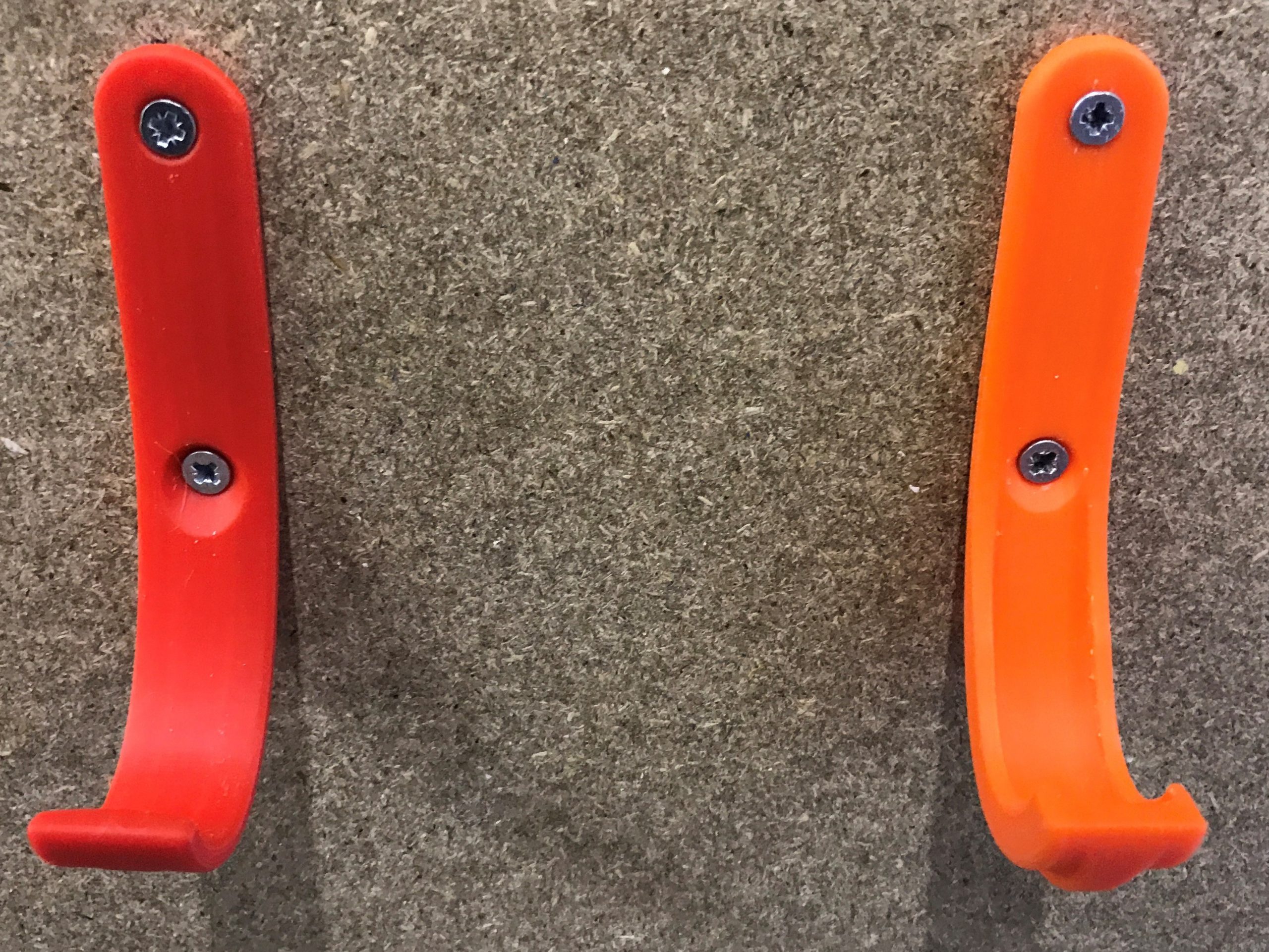
3D renders of hooks
 We’re often asked how strong our FDM 3D printed parts can be.
We’re often asked how strong our FDM 3D printed parts can be.
The answer… it really depends on the:
– size of the component
– parameters used for printing
– material chosen.
But to give an idea of how strong a 3D print can be we created two coat hook designs. Then we loaded them to failure to see just how much load can be taken through a simple printed part.
The main limitation of 3D printing is the component is built in layers. If a 3D printed component is subjected to a load that is largely parallel to these layers, it will fail at a relatively low load due to delamination. To make the hooks as strong as possible we need to ensure our layers are perpendicular to the force applied.

ABS hooks
Back to our hooks…
The first one, printed in red ABS, is a simple hook printed on st standard-setting with around a 40% infill.
The second hook was printed in orange ABS and strengthened with webs on either side, it was printed at 70% infill.
We were confident both of these designs would take a load over 30Kg because we conducted a simple structural analysis using SolidWorks before the test. However, we were surprised just how much load the two hooks were able to take.
The first hook failed at a very impressive 37.4Kg. The failure mode was not catastrophic; the hook simply uncurled and sprung back into shape. Although there were some signs of damage on the inward face of the hook, we are confident it would safely hold at least 50% of the failure load without issue.
The second hook did not fail, we loaded it to over 50Kg, which was the highest force we could measure at the time of testing, and again there were some small signs of damage.
- Damage on the first hook
- Reduced damage on the second hook
These results are of course far from conclusive, and we have had small components break in our hands after removing them from the machine. However, hopefully, you found this insight into FDM 3D printing interesting, and whilst it shows that 3D printed parts can withstand high loads, it should be understood that these designs have been optimised and orientated to give the best possible results.
If you would like to compare the strength of your own 3D printed components, please contact us. We are more than happy to share our STL file for you to print and would love to know what results you get.




